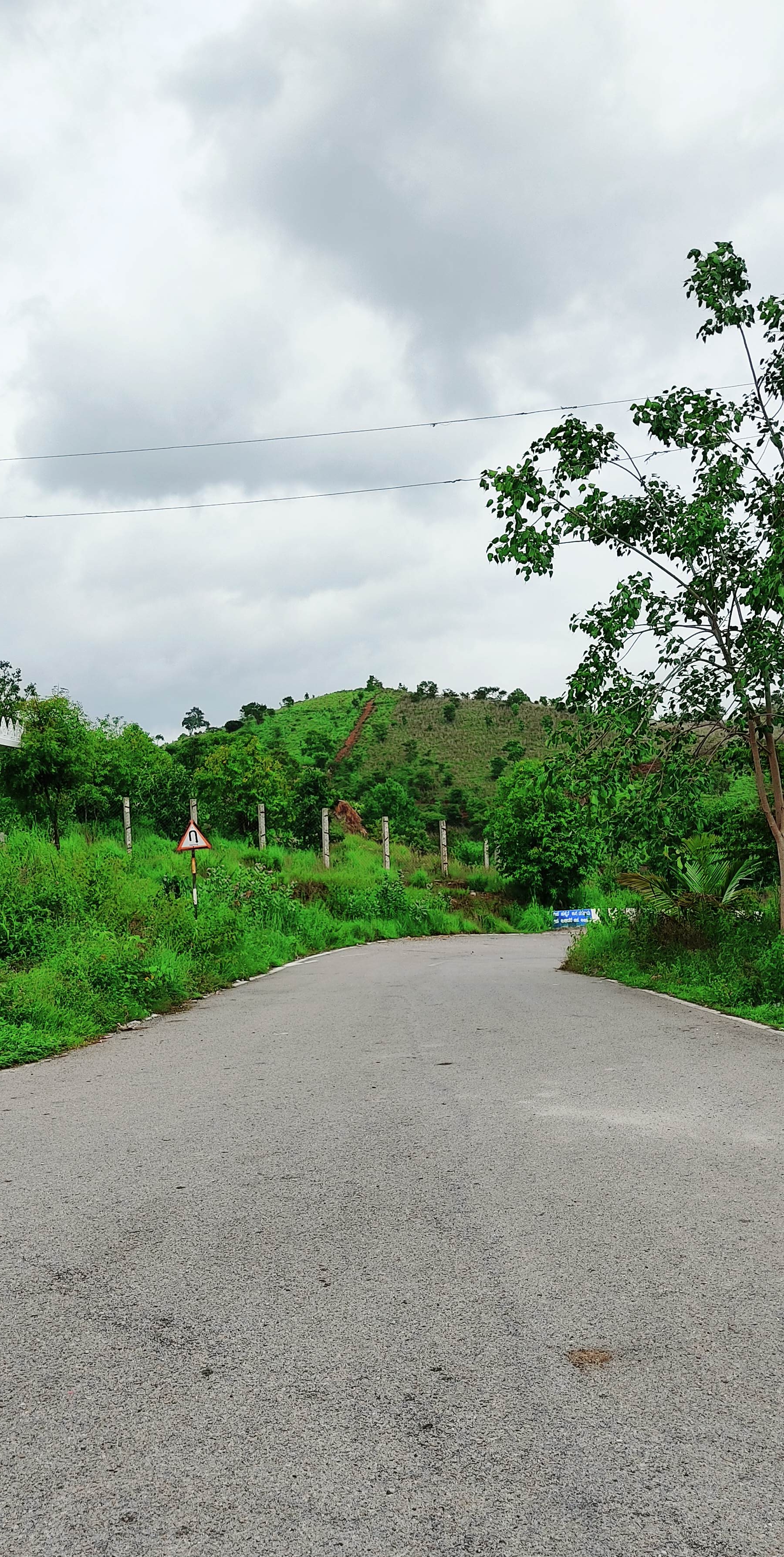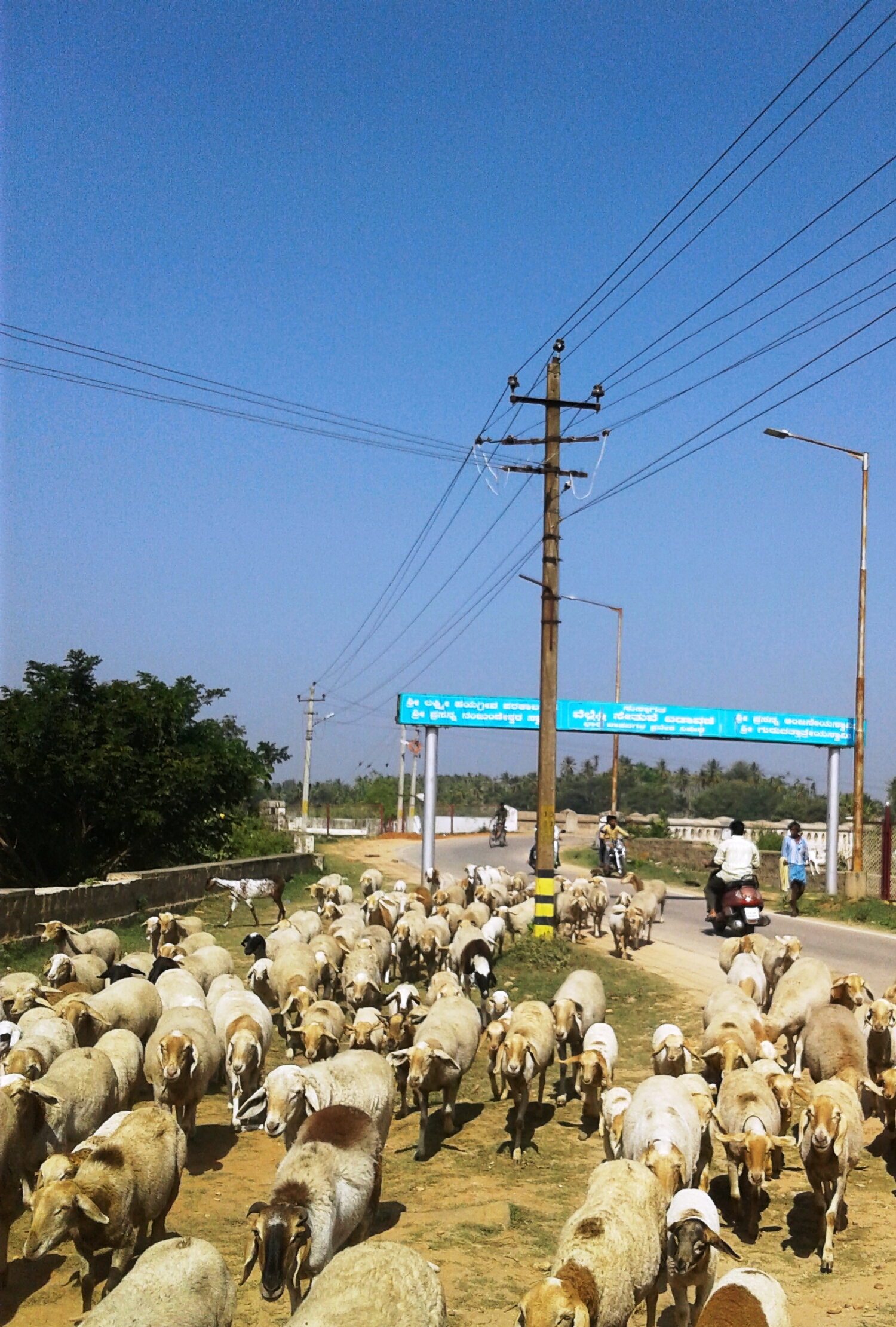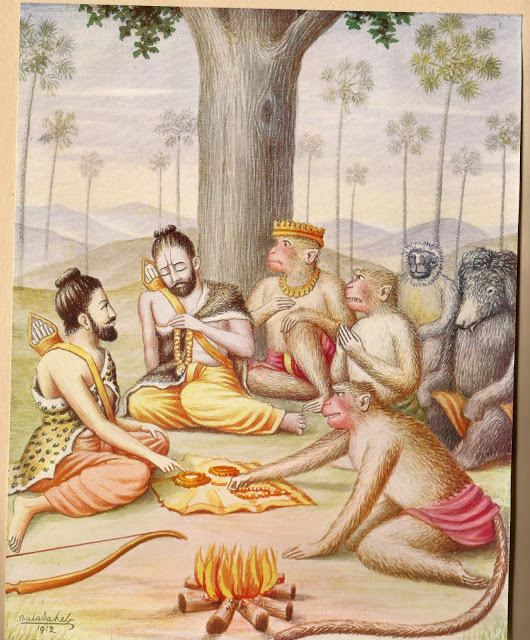|
Karighatta
Karighatta is a hill situated a few kilometres outside the 'island' town of Srirangapatna. It is situated off the Bangalore-Mysore Highway just before Srirangapatna in Karnataka state of India. Etymology The name Karighatta translates to "Elephant Hill" in Kannada. The hill has a Hindu temple devoted to a form of Hindu god Vishnu, called "Karigirivasa". This deity is also referred to as "Lord Srinivasa" and is also called "Bairagi Venkataramana". The epithet ‘Bairagi’ for this idol is derived from the fact that when ‘alankara’ (flower decoration) is done to the deity, the deity looks like a Bairagi (mendicant). Geography The hill stands at a height of 2697 feet above sea level. It supports dry scrub jungle and many tamarind and gooseberry trees are found around the temple. A small river, Lokapavani, a tributary of Kaveri flows by the hill. Structure of the temple The main entrance to the temple, with huge wooden doors opens into a large quadrangle, which is the main shr ... [...More Info...] [...Related Items...] OR: [Wikipedia] [Google] [Baidu] |
Srirangapatnam
Srirangapatna is a town and headquarters of one of the seven Taluks of Mandya district, in the Indian State of Karnataka. It gets its name from the Ranganthaswamy temple consecrated at around 984 CE. Later, under the British rule the city was renamed to Seringapatnam. Located near the city of Mandya, it is of religious, cultural and historic importance. The monuments on the island town of Srirangapatna have been nominated as a UNESCO World Heritage Site, and the application is pending on the tentative list of UNESCO. History Srirangapatna has since time immemorial been an urban center and place of pilgrimage. During the Vijayanagar empire, it became the seat of a major viceroyalty, from where several nearby vassal states of the empire, such as Mysore and Talakad, were overseen. When perceiving the decline of the Vijayanagar empire, the rulers of Mysore ventured to assert independence, Srirangapatna was their first target. Raja Wodeyar I vanquished Rangaraya, the then vicer ... [...More Info...] [...Related Items...] OR: [Wikipedia] [Google] [Baidu] |
Srirangapatna
Srirangapatna is a town and headquarters of one of the seven Taluks of Mandya district, in the Indian State of Karnataka. It gets its name from the Ranganthaswamy temple consecrated at around 984 CE. Later, under the British rule the city was renamed to Seringapatnam. Located near the city of Mandya, it is of religious, cultural and historic importance. The monuments on the island town of Srirangapatna have been nominated as a UNESCO World Heritage Site, and the application is pending on the tentative list of UNESCO. History Srirangapatna has since time immemorial been an urban center and place of pilgrimage. During the Vijayanagar empire, it became the seat of a major viceroyalty, from where several nearby vassal states of the empire, such as Mysore and Talakad, were overseen. When perceiving the decline of the Vijayanagar empire, the rulers of Mysore ventured to assert independence, Srirangapatna was their first target. Raja Wodeyar I vanquished Rangaraya, the then viceroy ... [...More Info...] [...Related Items...] OR: [Wikipedia] [Google] [Baidu] |
Eragrostis
''Eragrostis'' is a large and widespread genus of plants in the grass family, found in many countries on all inhabited continents and many islands. ''Eragrostis'' is commonly known as lovegrass or canegrass. The name of the genus is derived from the Greek words ἔρως (''eros''), meaning "love", and ἄγρωστις (''agrostis''), meaning "grass". Lovegrass is commonly used as livestock fodder. The seeds appear to be of high nutritional value for some animals, but they are also very tiny and collecting them for human food is cumbersome and hence uncommon. A notable exception is teff ('' E. tef''), which is used to make traditional breads on the Horn of Africa, such as Ethiopian ''injera'' and Somalian '' laxoox''. It is a crop of commercial importance. '' E. clelandii'' and '' E. tremula'' are recorded as famine foods in Australia and Chad, respectively. Other species, such as '' E. amabilis'', are used as ornamental plants. '' E. cynosuroides'' is used in the '' pūjā ... [...More Info...] [...Related Items...] OR: [Wikipedia] [Google] [Baidu] |
Bhrigu
Bhrigu ( sa, भृगु, ) was a rishi in Hinduism. He was one of the seven great sages, the Saptarshis, one of the many Prajapatis (the facilitators of Creation) created by Brahma. The first compiler of predictive astrology, and also the author of '' Bhrigu Samhita'', the astrological ( Jyotish) classic, Bhrigu is considered a '' Manasa Putra'' ("mind-born-son") of Brahma. The adjectival form of the name, '' Bhargava'', is used to refer to the descendants and the school of Bhrigu. According to ''Manusmriti'', Bhrigu was a compatriot of and lived during the time of Manu, the Hindu progenitor of humanity. Bhrigu had his Ashram (Hermitage) on the Vadhusar River, a tributary of the Drishadwati River near Dhosi Hill in the Vedic state of Brahmavarta, presently on the border of Haryana and Rajasthan in India. Along with Manu, Bhrigu had made important contributions to ''Manusmriti'', which was constituted out of a sermon to a congregation of saints in the state of Brahmavarta, ... [...More Info...] [...Related Items...] OR: [Wikipedia] [Google] [Baidu] |
United Kingdom
The United Kingdom of Great Britain and Northern Ireland, commonly known as the United Kingdom (UK) or Britain, is a country in Europe, off the north-western coast of the European mainland, continental mainland. It comprises England, Scotland, Wales and Northern Ireland. The United Kingdom includes the island of Great Britain, the north-eastern part of the island of Ireland, and many List of islands of the United Kingdom, smaller islands within the British Isles. Northern Ireland shares Republic of Ireland–United Kingdom border, a land border with the Republic of Ireland; otherwise, the United Kingdom is surrounded by the Atlantic Ocean, the North Sea, the English Channel, the Celtic Sea and the Irish Sea. The total area of the United Kingdom is , with an estimated 2020 population of more than 67 million people. The United Kingdom has evolved from a series of annexations, unions and separations of constituent countries over several hundred years. The Treaty of Union between ... [...More Info...] [...Related Items...] OR: [Wikipedia] [Google] [Baidu] |
Varaha
Varaha ( sa, वराह, , "boar") is an avatar of the Hindu god Vishnu, in the form of a boar. Varaha is generally listed as third in the Dashavatara, the ten principal avatars of Vishnu. Varaha is most commonly associated with the legend of lifting the Earth (personified as the goddess Bhudevi) out of the cosmic ocean. When the asura Hiranyaksha stole the earth and hid her in the primordial waters, Vishnu appeared as Varaha to rescue her. Varaha slew the asura, and retrieved the Earth from the ocean, lifting it on his tusks, and restored Bhudevi to her place in the universe. Varaha may be depicted as completely a boar or in an anthropomorphic form, with a boar's head and the human body. His consort, Bhudevi, the personified Earth, is often depicted as a young woman, lifted by Varaha. Etymology and other names The deity Varaha derives its name from the Sanskrit word ''varāha'' (Devanagari: वराह, ) meaning "boar" or "wild boar". The word ''varāha'' is from ... [...More Info...] [...Related Items...] OR: [Wikipedia] [Google] [Baidu] |
Sugreeva
''This character is about the vanara, in the Ramayana.'' Sugriva ( sa, सुग्रीव, , ) is a character In the ancient Indian epic Ramayana. He is the younger brother of Vali, whom he succeeded as ruler of the vanara kingdom of Kishkindha. Rumā is his wife. He is a son of Surya, the Hindu deity of the sun. As the king of the vanaras, Sugriva aided Rama in his quest to liberate his wife Sita from captivity at the hands of the rakshasa king Ravana. Nomenclature He is also known as jv, Sugriwa, th, Su-khrip, lo, Sugeep, km, Sukhreeb, Creole: ''Soogrim'', lo, Sangkip, ta, Cukkirivan, my, Thugyeik, Sugreeva or Sugreev. Legend The story of Sugriva is part of Ramayana and in an abbreviated version, is also present in the Mahabharata. The king of Kishkindha, Vrikshraja, was a divine creature born from Brahma’s tilaka. He had the body of a human and face and tail of a monkey. He was instructed to roam the forests and kill demons. One day, Vriksharaja entered ... [...More Info...] [...Related Items...] OR: [Wikipedia] [Google] [Baidu] |
Sita
Sita (; ) also called as Janaki and Vaidehi is a Hindu goddess and the female protagonist of the Hindu epic, '' Ramayana''. She is the consort of Rama, the avatar of the god Vishnu, and is regarded as a form of Vishnu's consort, Lakshmi. She is also the chief goddess of Rama-centric Hindu traditions. Sita is known for her dedication, self-sacrifice, courage, and purity. She is one of the seventeen national heroes (r''astriya bibhuti'') of Nepal. Described as the daughter of Bhūmi (the earth), Sita is brought up as the adopted daughter of King Janaka of Videha. Sita, in her youth, chooses Rama, the prince of Ayodhya as her husband in a swayamvara. After the swayamvara, she accompanies her husband to his kingdom, but later chooses to accompany her husband, along with her brother-in-law Lakshmana, in his exile. While in exile, the trio settles in the Dandaka forest from where she is abducted by Ravana, the Rakshasa king of Lanka. She is imprisoned in the garden of ... [...More Info...] [...Related Items...] OR: [Wikipedia] [Google] [Baidu] |
Lanka
Lanka (, ) is the name given in Hindu epics to the island fortress capital of the legendary asura king Ravana in the epics of the ''Ramayana'' and the ''Mahabharata''. The fortress was situated on a plateau between three mountain peaks known as the Trikuta Mountains. The ancient city of Lankapura is said to have been burnt down by Hanuman. After its king, Ravana was killed by Rama with the help of Ravana's brother Vibhishana, the latter was crowned king of Lankapura. His descendants were said to still rule the kingdom during the period of the Pandavas. According to the ''Mahabharata'', the Pandava Sahadeva visited this kingdom during his southern military campaign for the rajasuya of Yudhishthira. Ramayana The island was situated on a plateau between three mountain peaks known as the Trikuta Mountains. The ancient city of Lankapura is thought to have been burnt down by Hanuman. After its king, Ravana was killed by Rama with the help of Ravana's brother Vibhisha ... [...More Info...] [...Related Items...] OR: [Wikipedia] [Google] [Baidu] |
Varaha Purana
The ''Varaha Purana'' ( sa, वराह पुराण, ) is a Sanskrit text from the Puranas genre of literature in Hinduism. It belongs to the Vaishnavism literature corpus praising Narayana (Vishnu), but includes chapters dedicated to praising and centered on Shiva and Shakti (goddesses it calls Brahmi, Vaishnavi and Raudri). The text exists in many versions, with major sections lost to history. The text has been estimated to have been first completed between the 10th and 12th centuries, and continuously revised thereafter. The surviving manuscripts of this text are notable, like ''Linga Purana'', because they do not cover the required ''Panchalakshana'' (five characteristics) expected in a Purana. Scholars have questioned whether it really qualifies as a Purana, and whether the extant manuscripts are merely a religious manual largely focussed on Vaishnava practices, with sections that also praise Shiva, Shakti and other gods in a secular way. The ''Varaha Purana'' includes ... [...More Info...] [...Related Items...] OR: [Wikipedia] [Google] [Baidu] |






